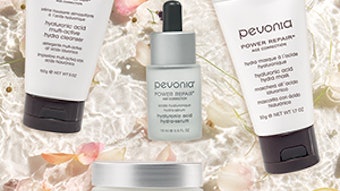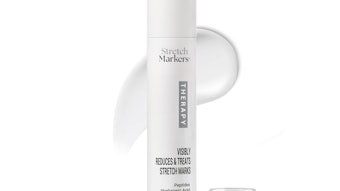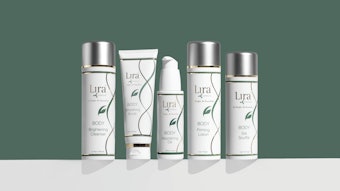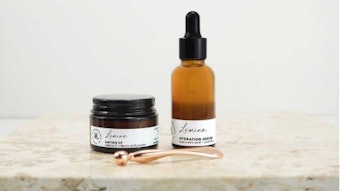Iron often is recognized in the context of anemia, or iron deprivation. The various ways of ensuring appropriate iron intake have been thoroughly discussed, whether through diet or the use of daily supplements.
However, there is a dark side to iron—namely, excess iron, which is discussed less frequently. Excess iron is a component of a variety of diseases, such as those involving cardiovascular, brain or muscle health. These all have an oxidative component and involve premature skin aging. The consequences of iron in the skin and its implication in aging are covered in this article.
Reactive oxygen species
Reactive oxygen species (ROS) are oxygen-derived reactive molecules. Some contain an unpaired electron and, because of this, are in a highly excited atomic state; these are known as free radicals. Others, such as hydrogen peroxide, do not. ROS are derived from molecular oxygen (O2), which is crucial to human survival. O2 is metabolized via successive reductions to the hydroxyl radical (.OH). These reactions are catalyzed by a series of antioxidant enzymes—including superoxide dismutase (SOD), glutathione peroxidase and catalase—and by the availability of the cofactors of these enzymes, such as selenium. At basal levels, ROS are involved in cellular metabolism, cell proliferation and, most importantly, in antibacterial and immune defenses. At unbalanced, high levels, however, ROS become toxic and play key roles in inflammation, cancer, cardiovascular diseases and skin aging.
ROS contributes significantly not only to skin aging, but also to more general aging processes throughout the body through the induction of oxidative injuries. These injuries damage almost all cellular and extracellular components, including proteins (intracellular and extracellular), lipids (lipid peroxidation), DNA (strand breaks and cross-links) and mitochondria (uncoupling of oxidative phosphorylation).
The link between iron and ROS
The ROS theory of aging is based on the existence of an equilibrium—or the lack of one—between aggressive oxidants and defensive/protective antioxidants. It also is based on the evidence that many age-related diseases are caused by increased production or exposure to oxidants and subsequent oxidative injury.
Iron, like oxygen, is indispensable for cell metabolism and overall good health. However, it also plays a major role in oxidative stress through the nonenzymatic Haber Weiss1 and Fenton2 reactions, producing the highly toxic .OH radical. Thus, the highly reactive .OH is produced whenever and wherever iron is available for the Haber Weiss/Fenton reactions. In the skin, these reactions are stimulated by sun exposure. It has been shown that ultraviolet (UV) exposure enhances the production of ROS, as well as the release of free iron, which induces further ROS. This is a deleterious vicious cycle. In the skin, excess iron combined with UV radiation plays a pro-oxidant role by promoting the production of the highly toxic .OH and further accelerating skin aging.
1 O2 + H2O2 to O2 + OH + OH (iron catalyzed)
2 Fe2+ + H2O2 to Fe3+ + OH + OH
Iron chelation
Many current anti-aging approaches focus efficiently on the neutralization of ROS, primarily through the use of antioxidants, including natural ones such as flavonoids, vitamins and trace elements. The prevention of ROS generation, however, should be considered in conjunction with these neutralization methods to ensure optimal therapeutic results. Generally, it is agreed that the essential external factor in the generation of ROS in the skin is sun exposure. Because of this, prevention techniques must focus on UV avoidance, as well as physical or chemical sun blocks that are deemed effective by their Sun Protection Factor (SPF).
In addition to sun avoidance, iron chelation—or neutralization and/or controlled deprivation—also may provide an effective preventive and therapeutic approach to various conditions associated with oxidative stress and aging. This hypothesis is supported by the fact that decreased iron reserves might contribute to increased life expectancy, and prevention and/or therapy of ROS-dependent diseases.
The efficacy of iron depletion in the prevention of skin aging has been discussed by various scientists who demonstrate the effectiveness of topical iron chelators in the prevention of short-term photodamage, and in the delay of the onset of skin wrinkling and skin tumors.2,3,4,5,6 This suggests that topical iron chelators prevent both short-term and long-term UV-induced photodamage, supporting their use in the prevention of premature skin aging.
Based on this data, other authors have proposed that bifunctional substances (both antioxidants and iron chelators) should be effective for photoprotection.7 Kojic acid, for example, features both scavenging and iron-chelating activity, which also is the case for many polyphenol flavonoids—particularly proanthocyanidines contained in grapes and blueberries.8 Topical iron chelator use will not lead to a general depletion of iron reserves and, therefore, has no harmful side effects. Further testing of the use of natural and synthetic iron chelators in skin care and the prevention of photodamage will pave the way for the development of powerful anti-aging products.
Reducing rather than adding
The use of topical iron chelators complements current therapeutic approaches that consist of adding antioxidants to the skin in order to neutralize ROS. Indeed, by reducing rather than adding, iron chelation therapies enhance the healing properties of various anti-aging products by preventing, to some degree, the formation of free radicals stimulated by excess free iron and UV light. To capitalize on early research, skin care professionals should look for antioxidant products containing iron chelators, such as kojic acid, grapes, and blueberries.
FOOTNOTES
1 M Takahashi and E Niki, The effect of oxidative stress on cells by oxygen radicals and its inhibition by antioxidants. In L Montagnier, R Oliver and C Pasquier, Oxidative stress in cancer, aids, and neurodegenerative diseases, New York, NY: Marcel Dekker, 1998
2 D L Bissett, R Chatterjee and D P Hannon, Chronic ultra-violet radiation-induced increase in skin iron and the photoprotective effect of topically applied iron chelators. Photochem Photobiol 54, 215-23 (August 1991)
3 D L Bissett, D M Oelrich and D P Hannon, Evaluation of a topical iron chelator in animals and in human beings: short-term photoprotection by 2-furildioxime. J Am Acad Dermatol 31, 572-8 (October 1994)
4 M Aubailly, R Santus and S Salmon, Ferrous ion release from ferritin by ultraviolet-A radiations. Photochem Photobiol 54, 769-73 (November 1991)
5 B A Jurkiewicz and G R Buettner, Ultraviolet light-induced free radical formation in skin: an electron paramagnetic resonance study. Photochem Photobiol 59, 1-4 (January 1994)
6 A Polla, L L Polla, B S Polla, Iron as the malignant spirit in successful ageing. Ageing Res Rev 2, 25-37 (2003)
7 H Mitani, I Koshiishi, T Sumita and T Imanari, Prevention of the photodamage in the hairless mouse dorsal skin by kojic acid as an iron chelator. Eur J Pharmacol 411, 169-174 (January 5, 2001)
8 H De Groot and U Rauen, Tissue injury by reactive oxygen species and the protective effects of flavonoids. Fundam Clin Pharmacol 12(3), 249-55 (1998)










